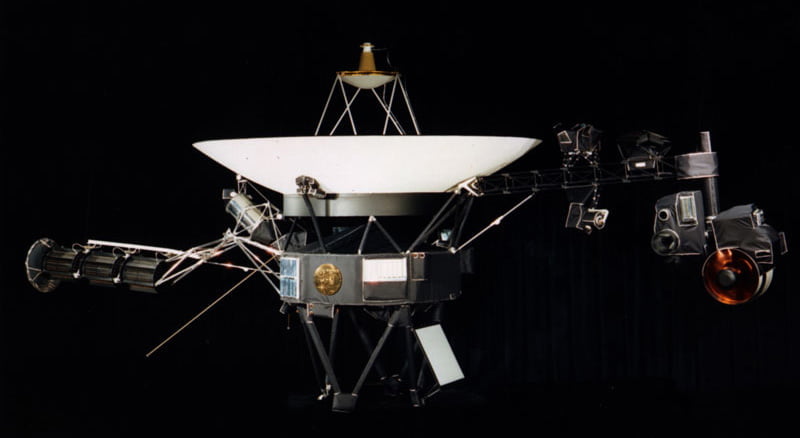
NASA : Voyager 1: A Journey Into the Unknown
In the scorching summer of 1977, Stamatios “Tom” Krimigis stood beneath the vast Florida sky, witnessing the momentous launch of Voyager 1 from Cape Canaveral. Fast forward over four decades, and Voyager 1 has ventured beyond the fringes of our solar system, traversing over 15 billion miles. Despite its remarkable journey, Voyager 1 has encountered an unexpected challenge, leaving scientists and engineers puzzled.
Krimigis, still amazed by Voyager 1’s longevity, now finds himself grappling with a new emotion—concern. Since mid-November, Voyager 1 has been transmitting baffling messages back to Earth, akin to a stroke impairing its communication abilities. Suzanne Dodd, leading the Voyager interstellar mission, describes the situation as grave, as Voyager 1 veers from its coherent binary code transmissions to sending erratic sequences of 1s and 0s.

The cause of this anomaly appears to be rooted in Voyager 1’s onboard computer system, a relic of 1970s technology. Dodd’s team embarks on a meticulous journey through archives and obsolete documents, seeking insights from Voyager’s original designers. While a list of potential fixes exists, implementing them presents a daunting task fraught with uncertainty.
Despite the challenges, Linda Spilker, Voyager mission’s project scientist, maintains a cautious optimism, praising her team’s ingenuity in troubleshooting the spacecraft’s issues. Yet, the resolution of Voyager 1’s communication dilemma remains elusive, disrupting vital scientific data collection, much to the dismay of researchers like Stella Ocker.
Ocker emphasizes the significance of Voyager 1’s mission, highlighting its unique ability to probe the interstellar environment. While Voyager 2 remains operational, Voyager 1’s distinct measurements are indispensable for Ocker’s research.

However, Voyager 1’s struggles are compounded by the inevitable depletion of its plutonium power source, signaling the approaching end of its mission. Krimigis, with a hint of humor, reflects on his previous motto of “50 years or bust,” acknowledging the impending conclusion of Voyager 1’s journey. As power conservation measures are enacted, the countdown to the probes’ eventual shutdown begins, with the last instrument expected to cease operations around 2030.
Despite this inevitable fate, the legacy of Voyager 1 persists, immortalized by its golden record, carrying greetings from Earth across the cosmos. Spilker muses on the enduring presence of Voyager, transcending humanity’s existence.
Yet, as Krimigis muses, the likelihood of Voyager encountering extraterrestrial life remains slim amidst the vast emptiness of space. Nonetheless, plans for future interstellar missions are underway, aiming to push the boundaries of exploration even further.
In the twilight of Voyager 1’s mission, scientists continue to draw inspiration from its remarkable journey, reminding us of humanity’s insatiable curiosity and quest for knowledge beyond the stars.








